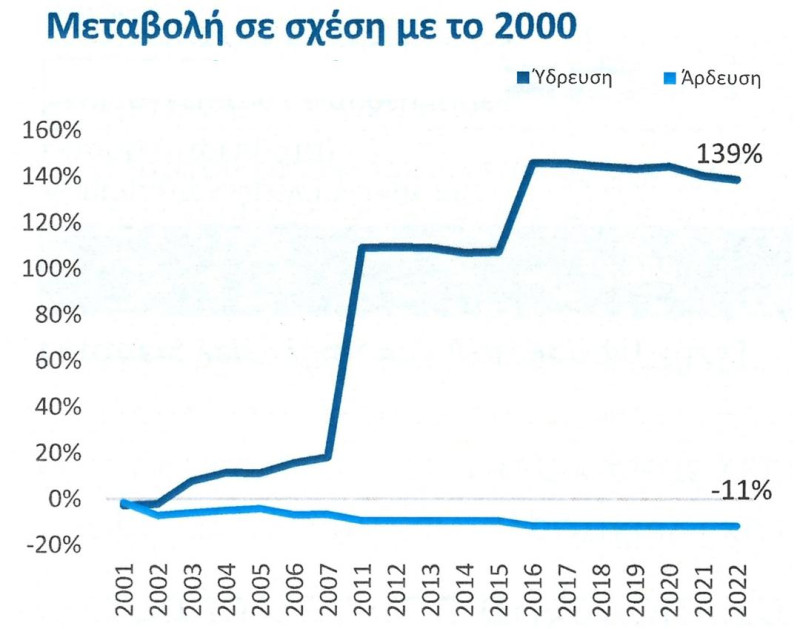Despite increased rainfall of recent months, water reserves in PPC hydroelectric reservoirs are at historically low levels
In 19th place in the world’s risk of water scarcity, our country is mainly due to climate change, which has a negative impact on both supply (rainfall reduction) and demand (increased consumption for irrigation and general uses).
These figures result from a survey by the World Resources Institute and a Deloitte report on water management on behalf of the Greek government.
The report, which is revealed by the Athens-Macedonian News Agency, highlights the magnitude of the danger that our country is facing. A danger, which is of course intensified, if the losses of networks that multiply the problem are taken into account.
According to the Deloitte report, Greece in detail:
1. Records overflow (+139%) of water ends for water in 2001-2022, including, among other reasons, increased tourist traffic.
Doubling water ejectures for water is due to the combination of increasing tourist movement and the rise of consumption per capita but also to the large 50% – losses from distribution networks. The problem is even greater in areas with increased tourist flows (such as the Cyclades) where consumption is increased while resource availability is very limited. An additional problem is the fact that demand for tourist destinations culminates during the summer months, when there are already adequacy issues on several islands while the infrastructure is being stressed at the same time.
2. Spending the largest volume of water per hectare of irrigated land in the European Union and significantly higher than the EU Mediterranean Climatological Elements. Despite the significant decrease in agricultural holdings in previous years, water dumps have not significantly reduced by water. More of which are over 20 years- and cultivating varieties with greater water needs.
Furthermore, the report notes, the agricultural support policies can lead to an increase in irrigated areas, and thus water consumption, in the coming years.
3. It faces a reduction in superficial resources availability and increasing the use of drilling, resulting in water supply.
According to ELSTAT data during the period 2000-2022, groundwater pumping increased by 80%, from 3,453 million cubic meters a year to 6,221. On the contrary, the use of surface water decreased by 40% (3,852 million cm in 2022 versus 6,471 million cm in 2000). The significant increase in groundwater pumping pushes stocks on the aquifer and leads to water hydration.
It is also indicative that despite increased rainfall in recent months, water reserves in PPC hydroelectric reservoirs are at historically low levels. PPC dams are used for both energy production and irrigation/water supply. Thus, the reduction in stocks poses risks not only to water adequacy but also for the cost of electricity.
Source: Deloitte Report
Source: Skai
I have worked as a journalist for over 10 years, and my work has been featured on many different news websites. I am also an author, and my work has been published in several books. I specialize in opinion writing, and I often write about current events and controversial topics. I am a very well-rounded writer, and I have a lot of experience in different areas of journalism. I am a very hard worker, and I am always willing to put in the extra effort to get the job done.











